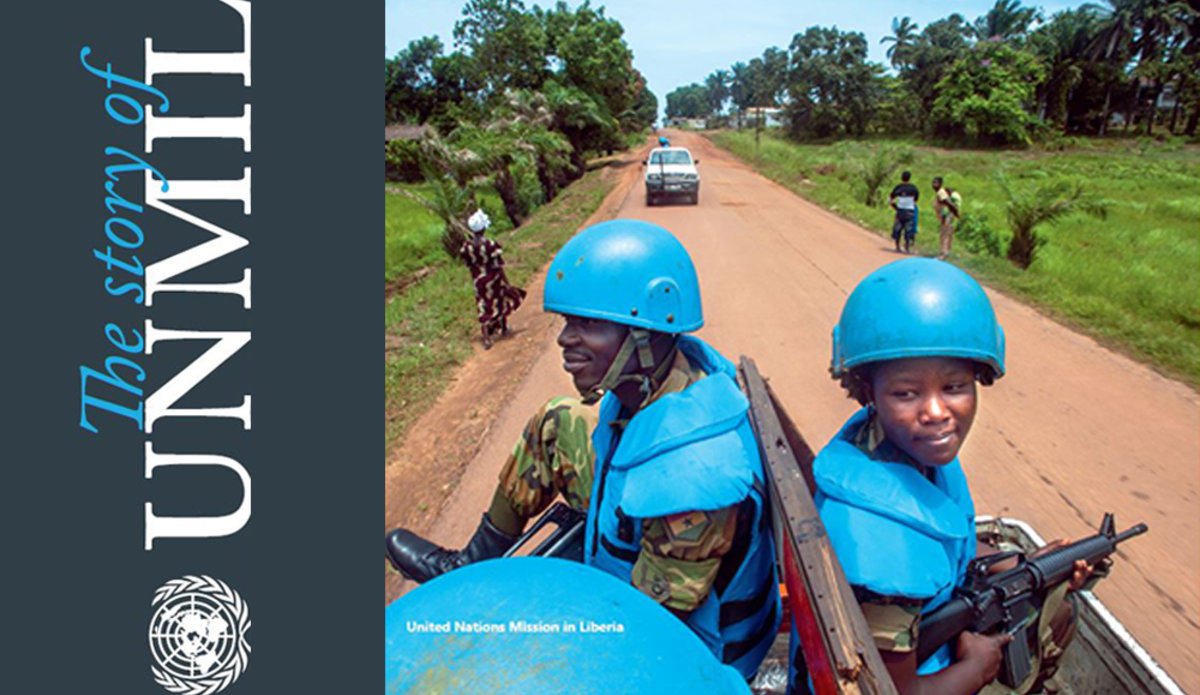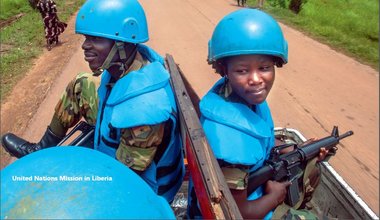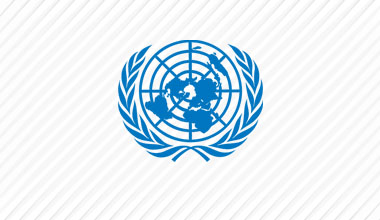The story of UNMIL [Book]: Joint Analysis and Operations Centre, keeping the Mission informed

The Joint Analysis & Operations Centre (JAOC) contains both the Joint Mission Analysis Centre (JMAC) and the Joint Operation Centre (JOC), to provide in-depth analysis of security-related issues in Liberia and the surrounding region. JAOC is staffed by police and military officers from several countries including Norway, Germany, Nigeria, Ghana, and the US, which has created a dynamic exchange of ideas and processes. Members of the Liberia National Police and Armed Forces of Liberia (AFL) also sit in the centre with links to their respective headquarters.
Through the process of information fusion, the JAOC collects, collates and displays information from all sources within the Mission area, producing short to long-range assessments and information support for crisis management, and Mission and contingency planning. JAOC achieves information fusion though two steps: first, the Joint Operations Centre receives the day to day reporting from Liberian sources, such as the police, armed forces and National Security Agency. That office then transfers the raw information to the JAOC through two daily reports.
JAOC synthesizes the information collected from political, military, police, security, rule of law, human rights and other components of the Mission to produce daily and weekly code cables to the UN Headquarters in New York. These code cables have built the awareness of Headquarters officials at the Department of Peacekeeping Operations of activities that may influence mandate implementation.
The JAOC also produced bi-weekly threat assessments that provided quick references for the Mission leadership while delivering issues and trends and estimates of cross-cutting concerns and risks that may harm implementation of the mandate. JAOC personnel also conducted quarterly visits across Liberia to provide critical environmental context.
As UNMIL drew down, and with the late 2017 election period, JAOC assumed the function of the Joint Mission Analysis Centre, coordinating both national and international situation rooms, monitoring rallies, campaigning and election day incidents. The Joint Operations Centre first collated information on daily activities from national partners, sending it to the JAOC, which was collecting information from non-UN entities such as the Women’s Situation Room, Elections Coordinating Committee, Liberia Elections Observation Network, National Democratic Institute, The Carter Center, the European Union, ECOWAS, the African Union, and Electoral Institute for Sustainable Democracy in Africa.
JAOC used this two-step process to review raw information from more than 200 different reports and provided near real-time details through hourly flash reports to senior Mission management and key officials. This gave the Mission continuously updated awareness of activities that could have caused instability. Each flash report was broken down by county and presented the highlights of events during that given hour, enabling the Mission to adapt its security posture.
After the election, JAOC produced a comprehensive assessment which provided Mission leadership with a qualitative and quantitative analysis of events, issues, and trends that took place over the electoral period. This was integrated into the Mission leadership’s decision making process, while contributing to risk assessments and mitigation steps developed by UN Department for Safety and Security, which will inherit the intelligence-gathering role for the UN Country Team once the Mission departs.
 UN
UN United Nations Peacekeeping
United Nations Peacekeeping

![The story of UNMIL [Book]:Capacity-building helps community to its feet The story of UNMIL [Book]:Capacity-building helps community to its feet](https://unmil.unmissions.org/sites/default/files/styles/gallery_image_thumb/public/field/image/muratoret.jpg?itok=MrojywAu)
![The story of UNMIL [Book]: Bailey bridge - connecting Liberia The story of UNMIL [Book]: Bailey bridge - connecting Liberia](https://unmil.unmissions.org/sites/default/files/styles/gallery_image_thumb/public/field/image/pakcon-fixing_bridges.jpg?itok=m-mY3fB5)


